Also known as field garlic, onion grass and crow garlic, Allium vineale is an edible, invasive European allium many people will already know. While they take some time to clean, they're an edible plant every forager should know that's easy to identify. Today we'll go over the basics of harvesting, cleaning and cooking with them.
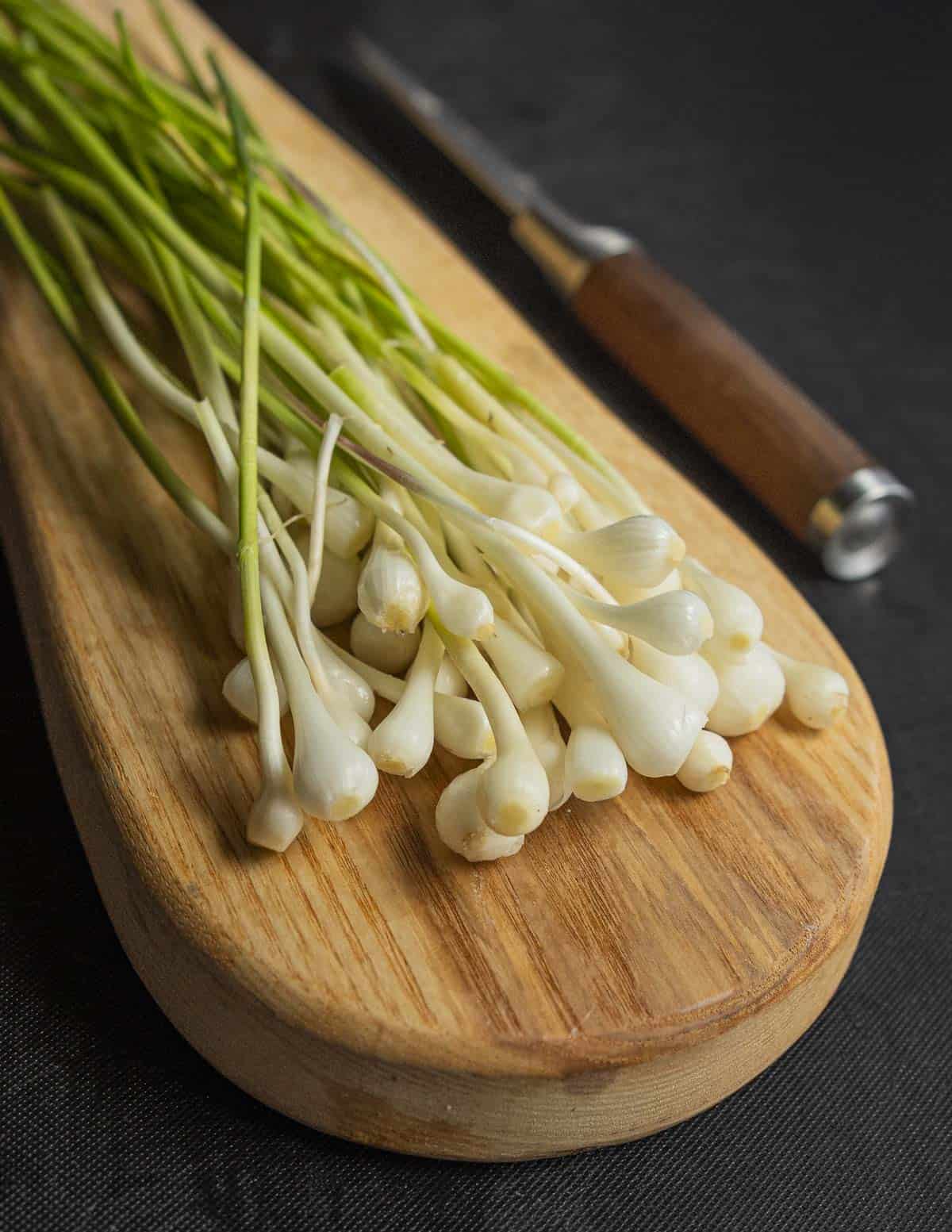
While I've known of this plant and cooked with it a few times, I don't see it often in Minnesota and Wisconsin. On my recent trip to Georgia to speak at the Atlanta Botanical Garden, I noticed it right away on my first (fruitless) morel foray with my host Julia Kerigan, a mycologist at Clemson University.
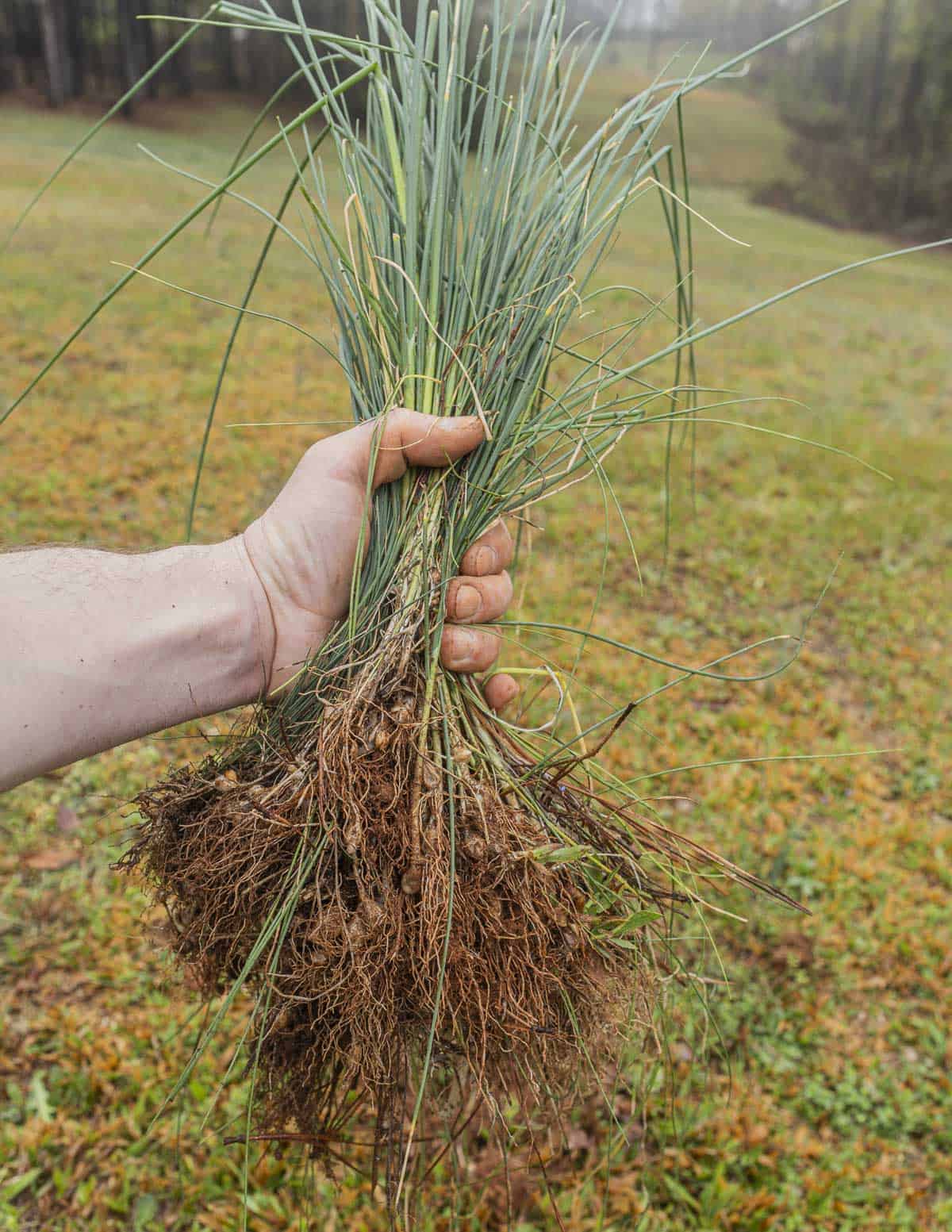
Julia was nice enough to take a detour to her home where the plant seemed to be everywhere. Thanks Julia-the plants survived in a suitcase just fine.
Background
Native to Europe, A. vineale is considered a noxious weed and is common in disturbed areas like lawns, fields, and woods across North America. The name onion grass is apt, as in a patch where it's established the chive-like spring shoots can be as thick as grass. The hollow green shoots of A vineale are different from other wild alliums (Allium canadense, triquetrum and others) which have flat leaves.
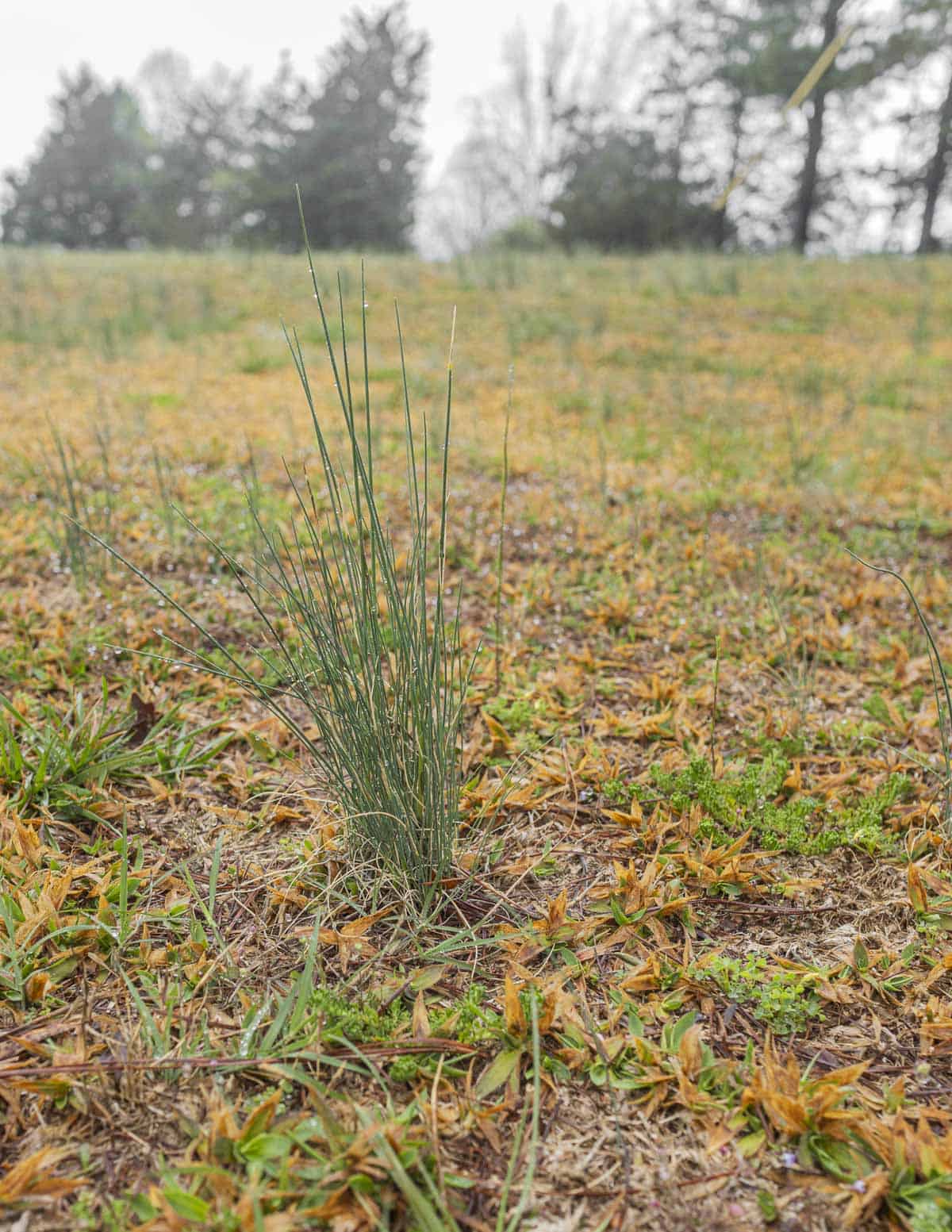
The best time to harvest the bulbs is late spring to early summer. The leaves can be harvested through the winter and into spring. In the summer flower stalks will create small bulblets that are edible and look similar to the A. canadense bulblets below. They're a bit like miniature garlic scapes.
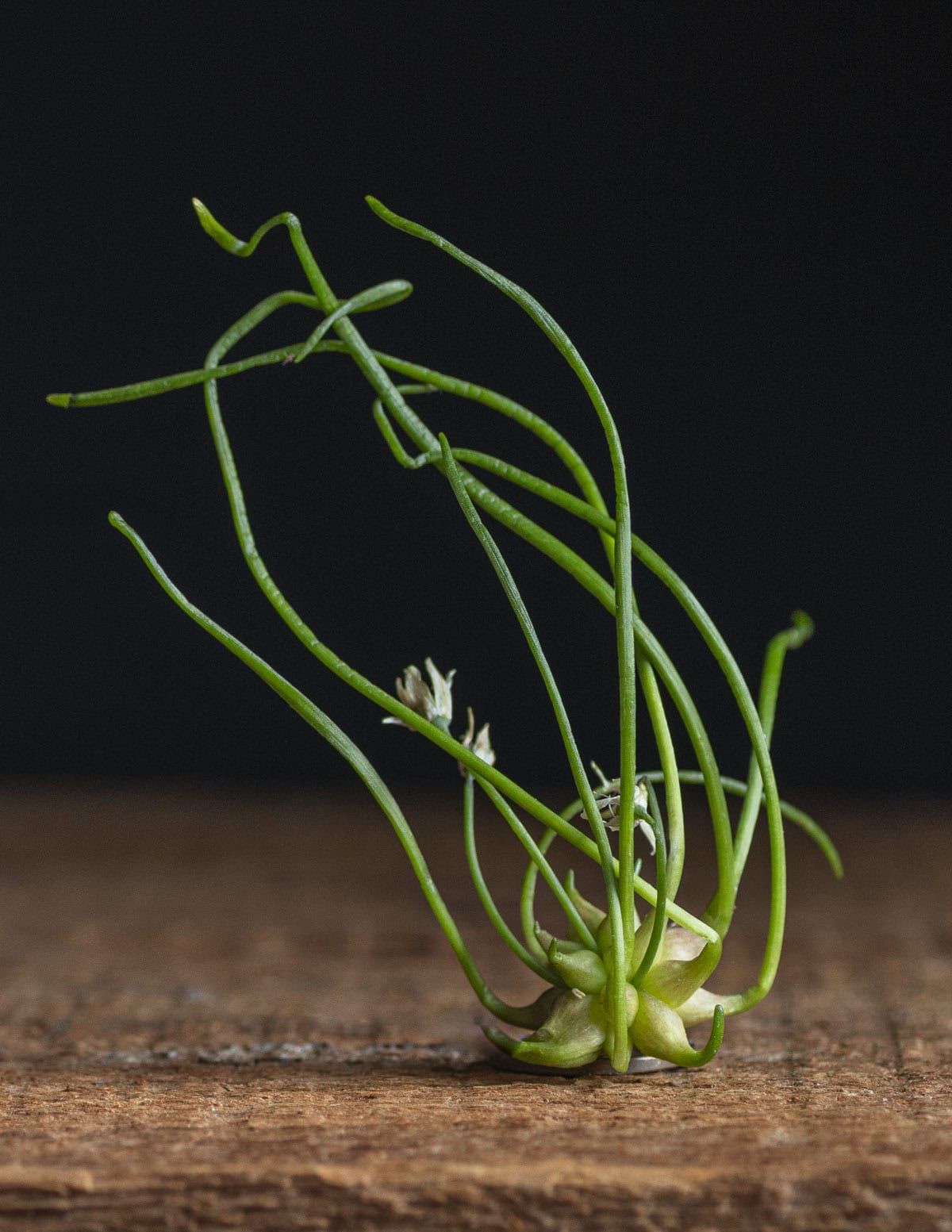
Harvesting and Cleaning
While some references I have describe uprooting the bulbs by pulling on the stems, I found that gave me handfuls of greens without bulbs. Using a shovel gave a much better yield. Unlike ramps / wild leeks it's fine to harvest as much of this plant as you want as the plant is weedy and aggressive.
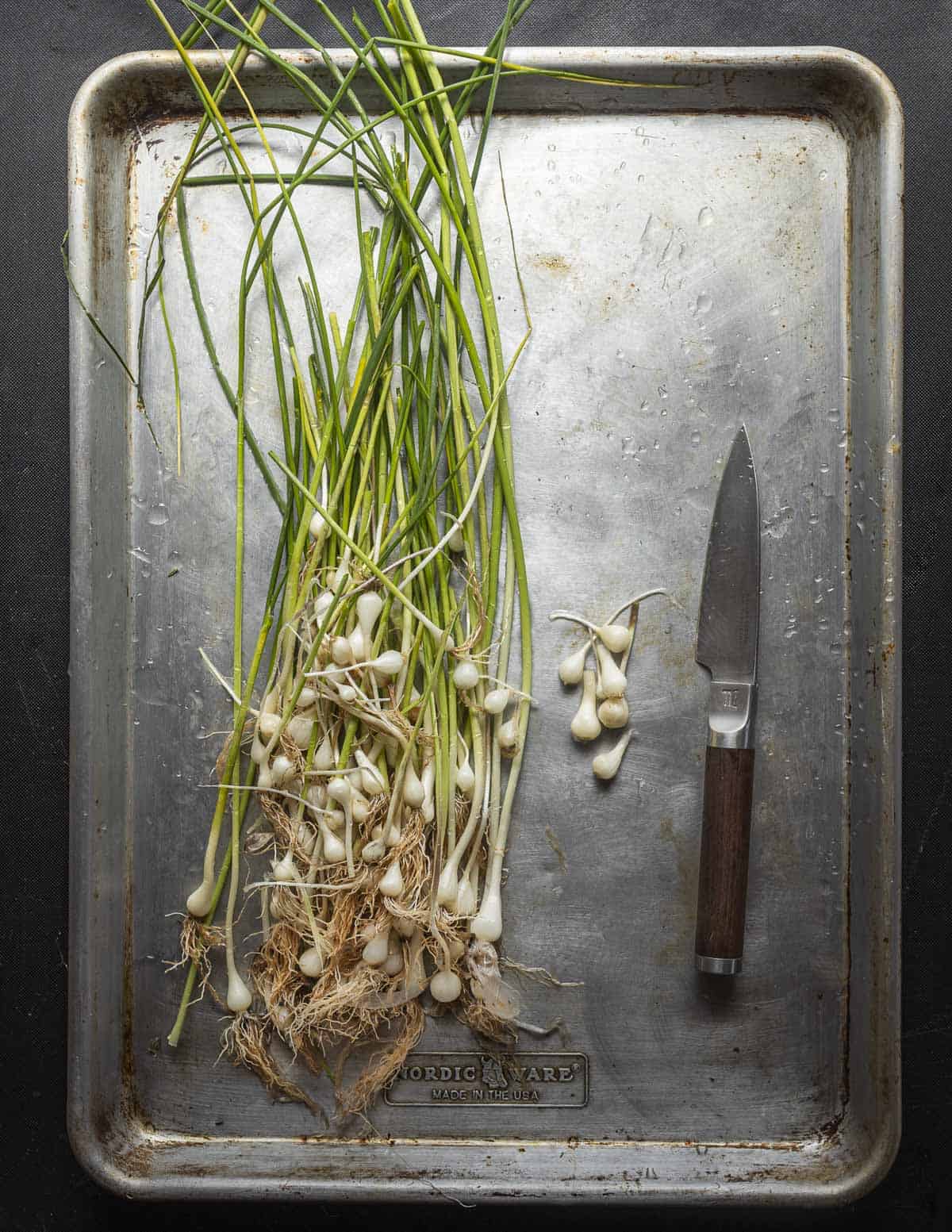
To be clear, A. vineale are not as good as ramps in flavor or ease of harvesting. On the bright side, they're widespread and easy to find. As they're invasive, it's also fine to dig as many as you like. One thing I noticed was that looking for the plants with the thickest stems gave the largest bulbs.
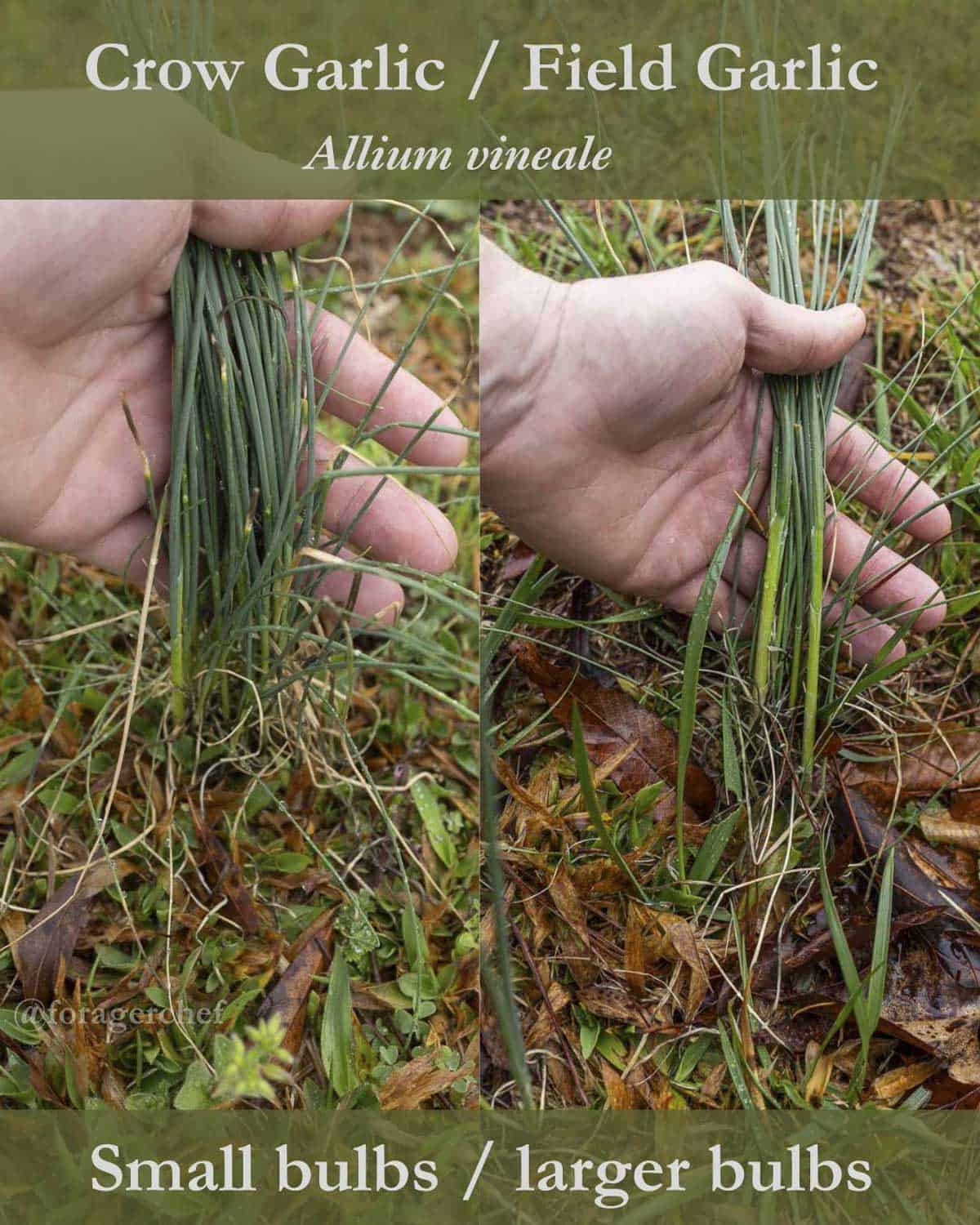
After you've dug the plants up they need to be washed repeatedly until cleaned. This is a process, and it took me about two hours to clean six ounces of onion bulbs and greens.
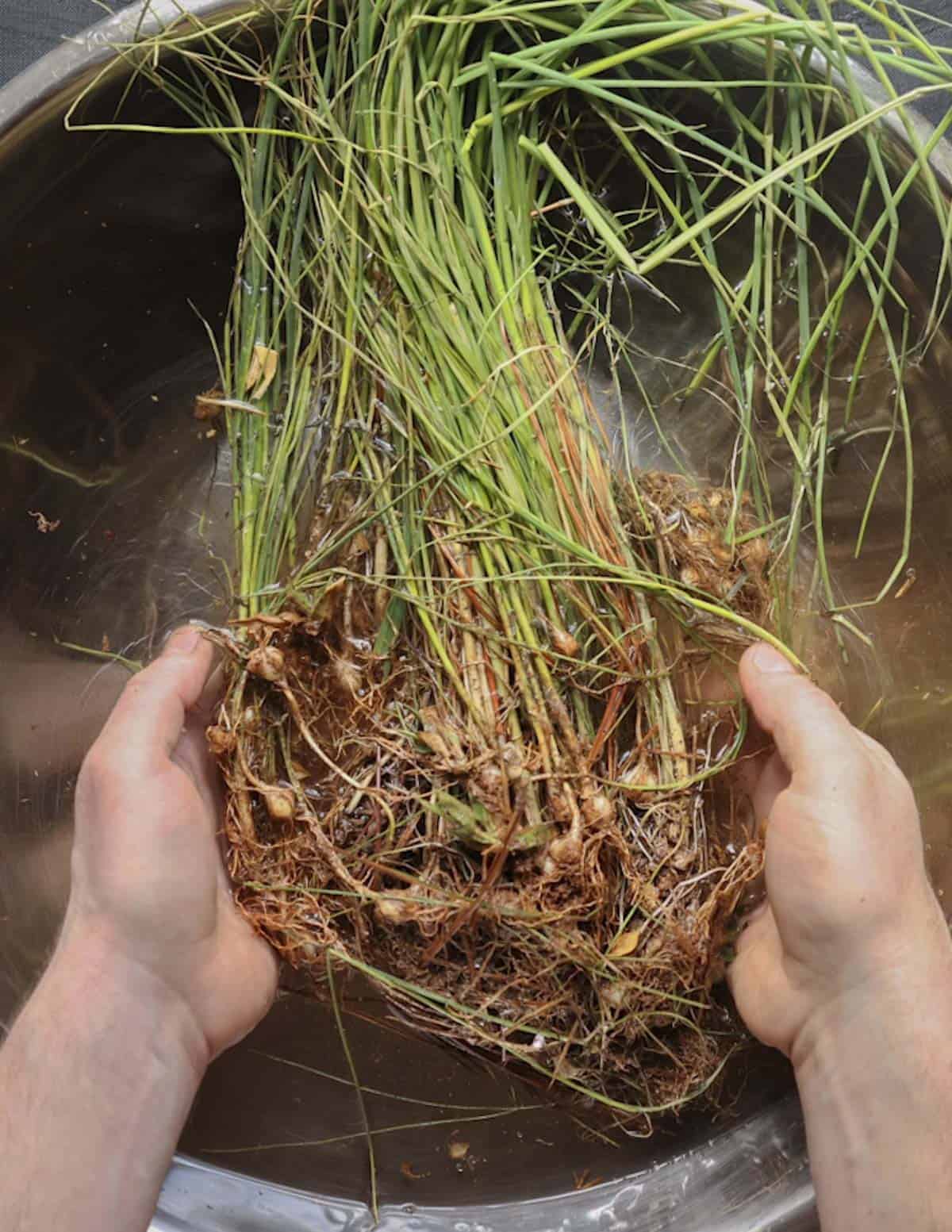
After the plants are washed they must be trimmed. Just like ramps, there's a thin, chewy sheath surrounding each bulb that should be peeled off.

It doesn't stop there, the next layer of flesh surrounding each bulb was extremely bitter in my collection, so I had to remove an additional layer of flesh as well. Depending on your tolerance for bitter flavors it may not be an issue.
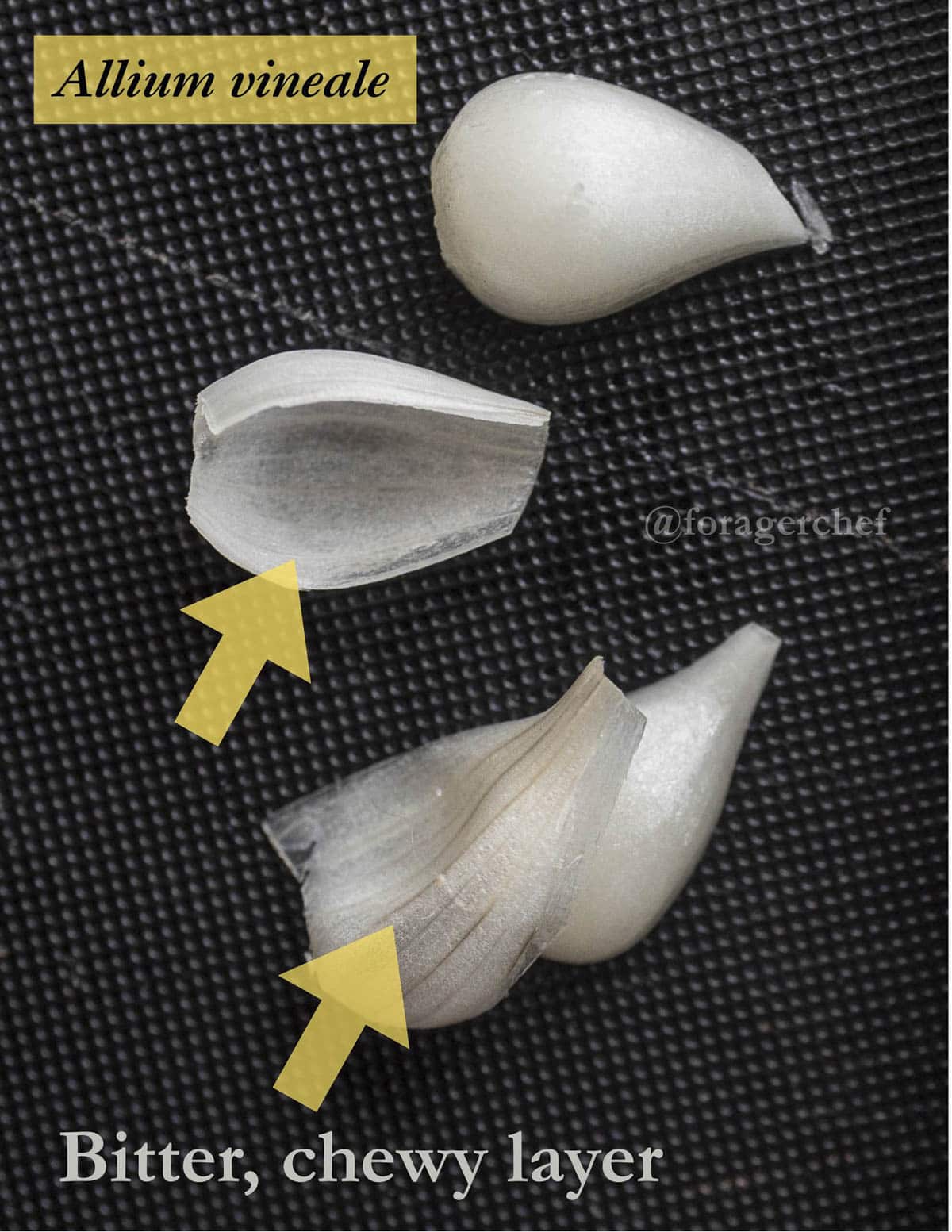
After the plants are cleaned I like to separate the bulbs from the greenish white flower stems. The green parts of the plant that can be used like chives will have a shorter shelf life than the bulbs. I store both plants in zip top bags with a moist paper towel in the fridge. The greens will last for a week, the bulbs much longer.
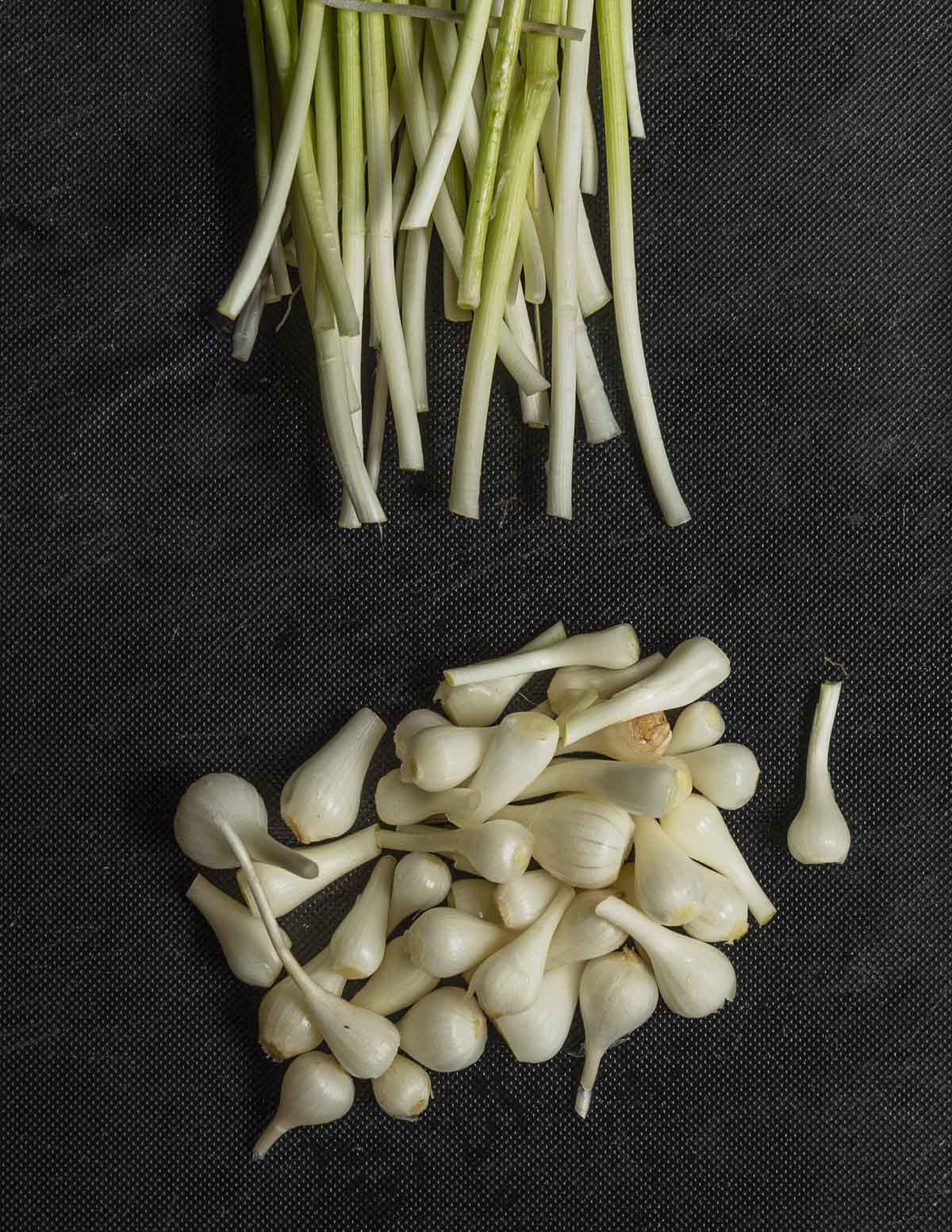
Depending on the size of the bulbs, your harvest my not look like much, as smaller plants will have bulbs the size of a pea, or smaller.
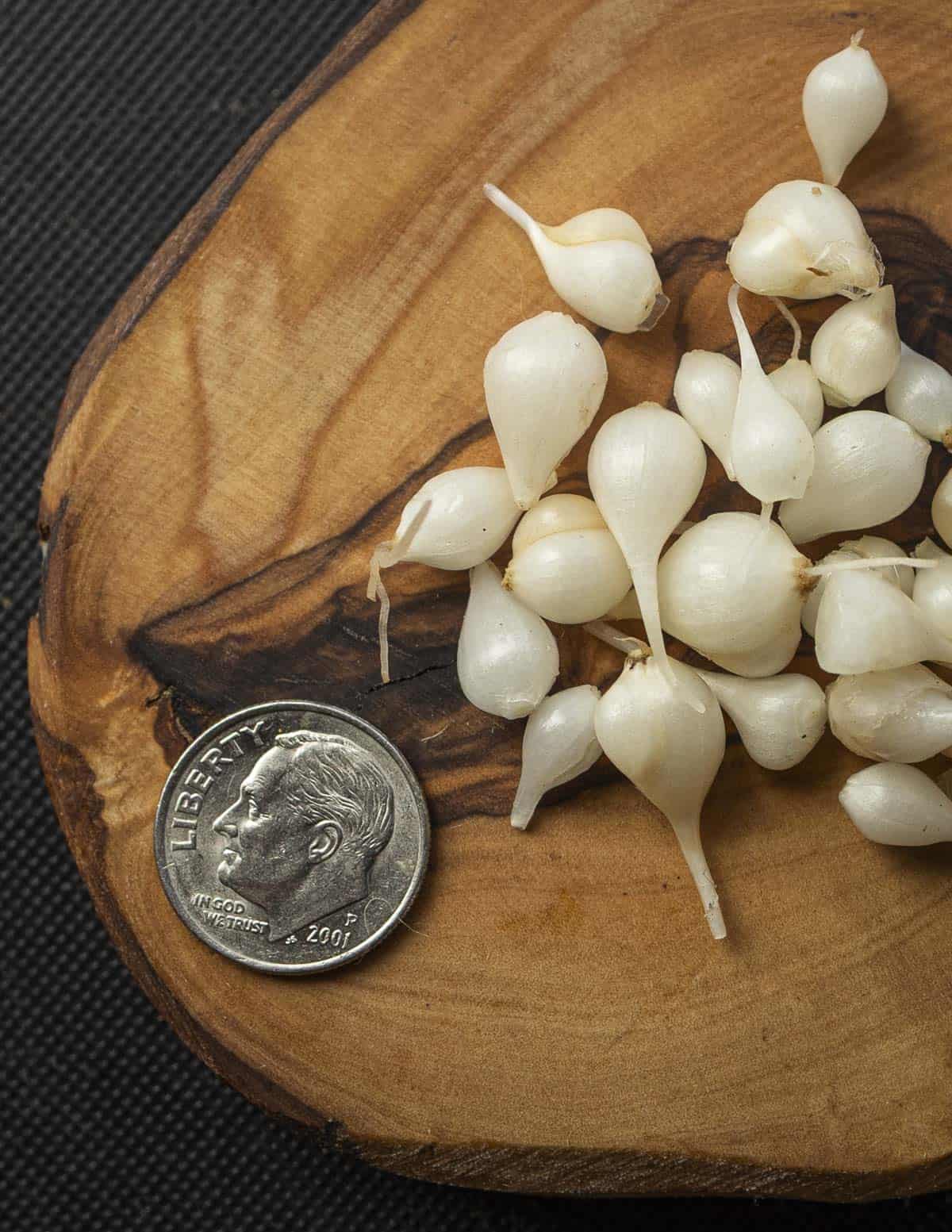
How to Remove Onion Grass
Like garlic mustard, this can be a stubborn plant to remove and it will take a few years. You'll want to repeatedly dig the plants and underground bulbs, making sure that any pieces of bulb that flake off don't fall back on the ground as they'll continue to grow.

Inevitably some plants will remain, so if you don't want to use Round Up, you'll need to keep digging the plants for a few years until they become less prolific.
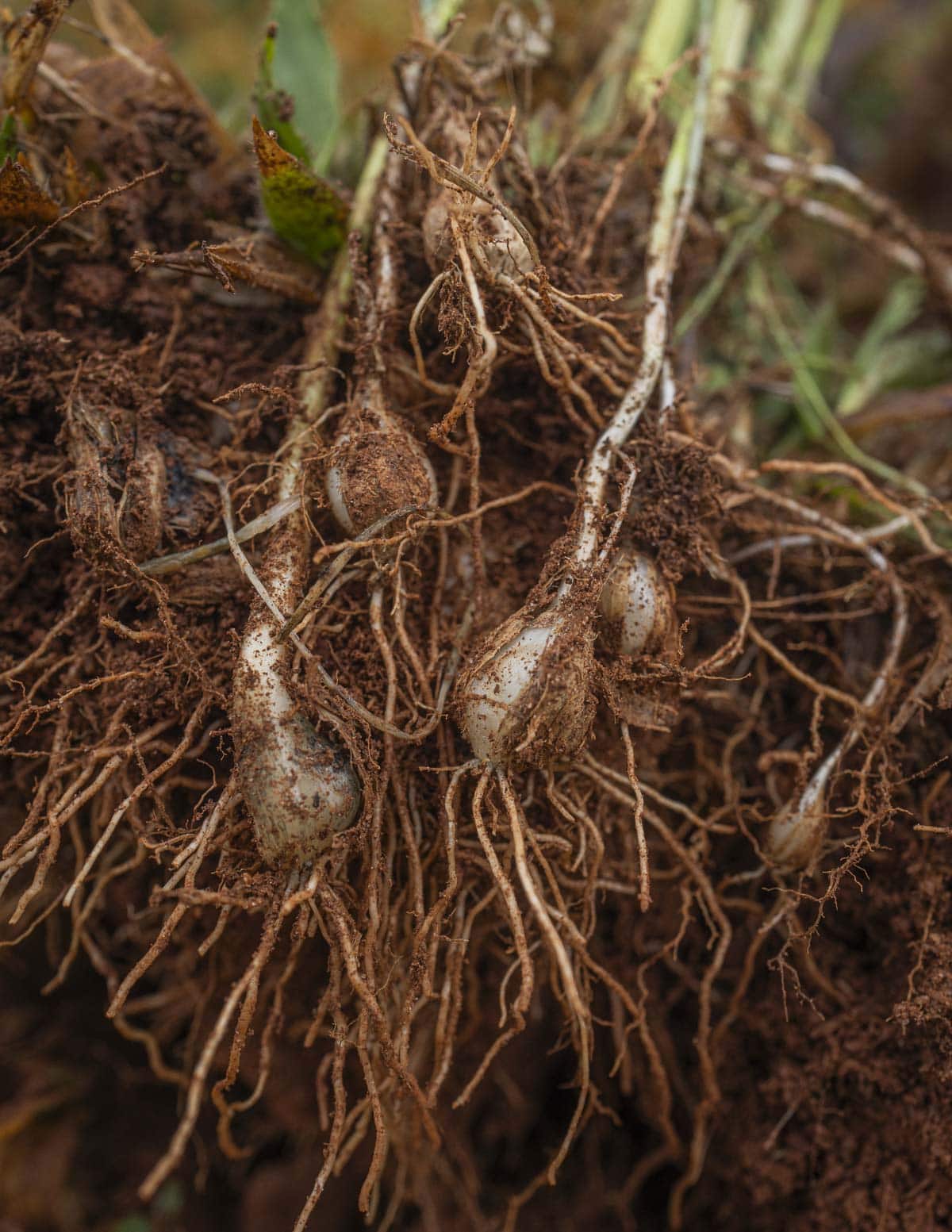
General Cooking
When young and tender the whole plant can be cooked as you would green garlic or a spring onion. The green and white stems are a little tougher than chives so they should be thinly sliced for cooking.
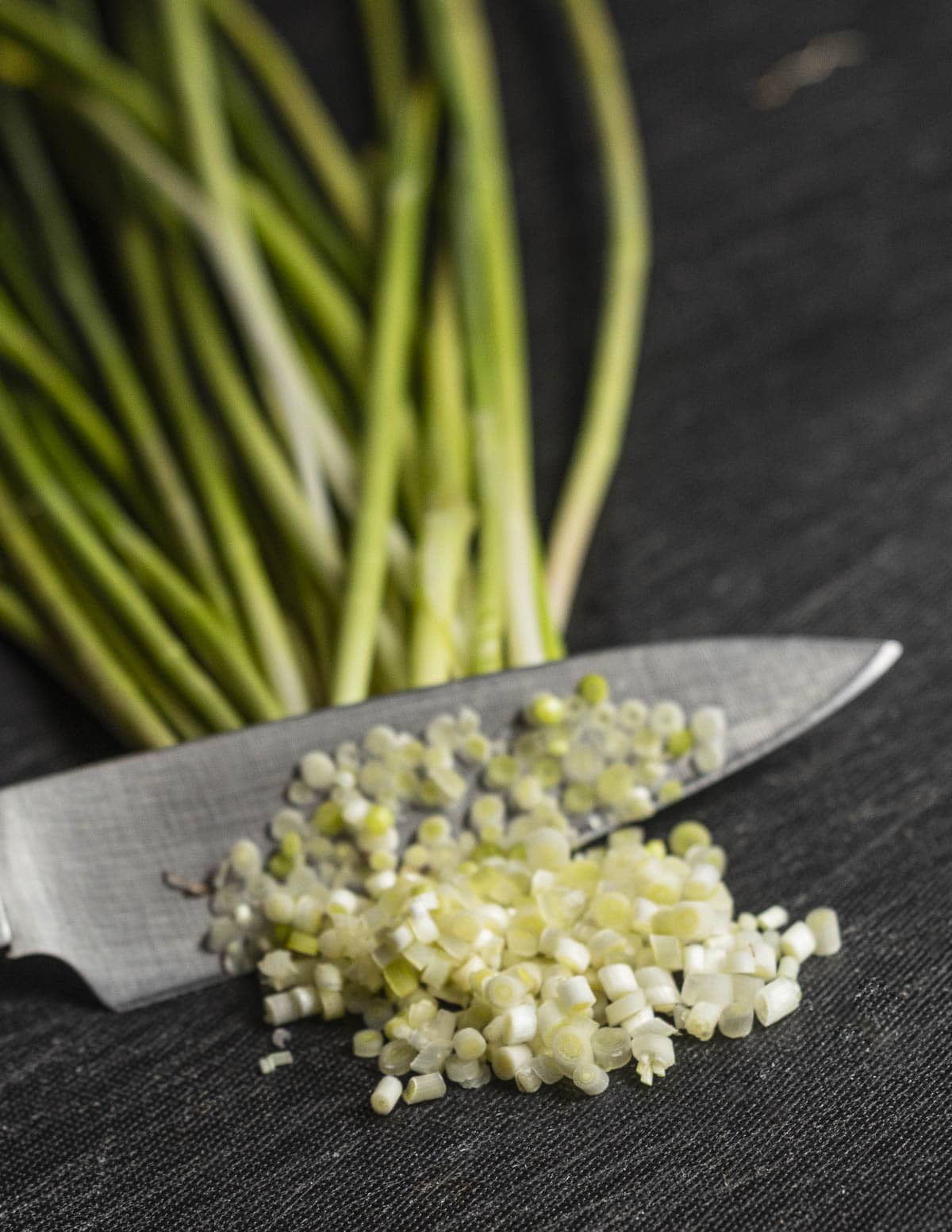
You can use the plant just about any way you'd use an onion or a pearl onion. I find the flavor much more mild and less "sweet" than ramps but not as strong as wild garlic. To me they taste a bit like small white onions with a noticeably pungent, wild flavor. Here's a few things I'll make with them and other alliaceous plants.
- The bulblets can be pickled to preserve them, sprinkled on salads and just about any place you'd use pickled onions. I used to put pickled A. canadense bulblets on beef tartare.
- If you find the green and white parts of the plant tough, they a good stand-in for ramp leaves in an infused wild onion oil.
- Finely sliced, the stems and bulbs make great onion confit, slowly simmered in a few spoonfuls of lard or animal fat with a pinch of salt and herbs. Try it warmed up and spooned on a piece of fish or risotto.
- The leaves can make a decent wild onion butter. Follow my recipe for ramp butter, omitting the blanching of the leaves. I use the butter raw as a spread or warmed up and spooned on dishes like the soup below. Make sure to slice the leaves very fine.
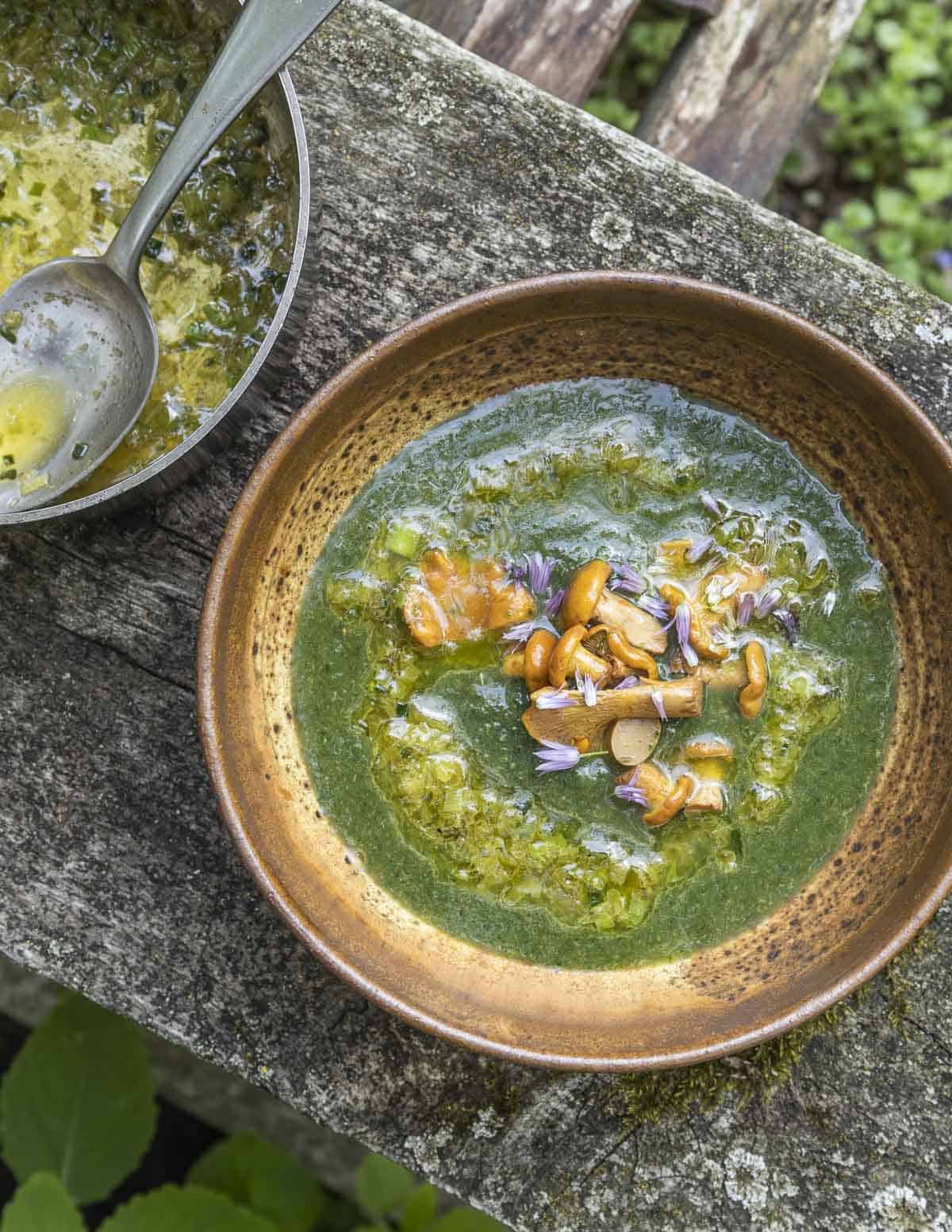
A Few Wild Onion Recipes
The bulbs can be used just like pearl onions, but will fade into the background a bit if they're cooked until they're tender. Like other alliums, they have an affinity for bacon.
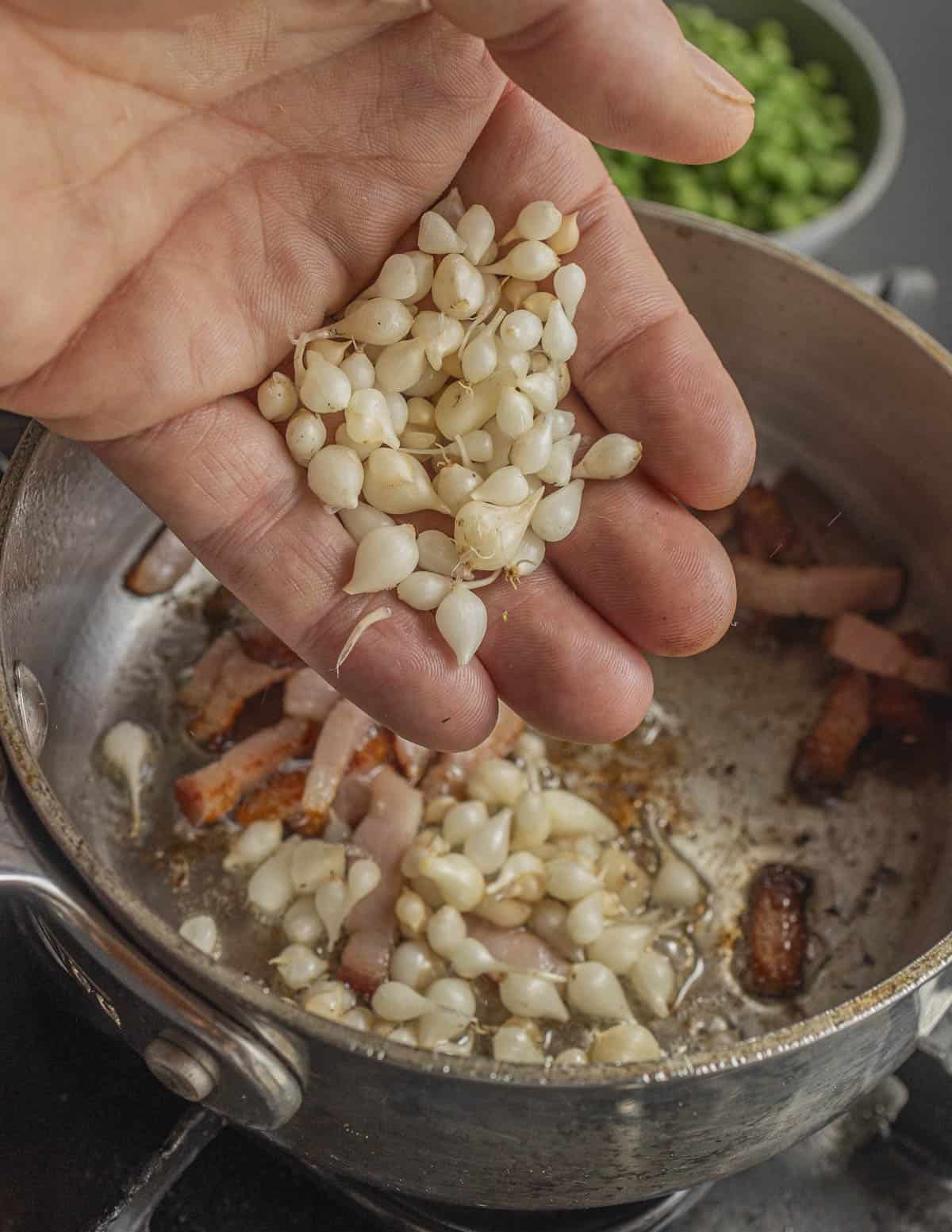
They made a nice bowl of peas with mint and homemade pancetta.
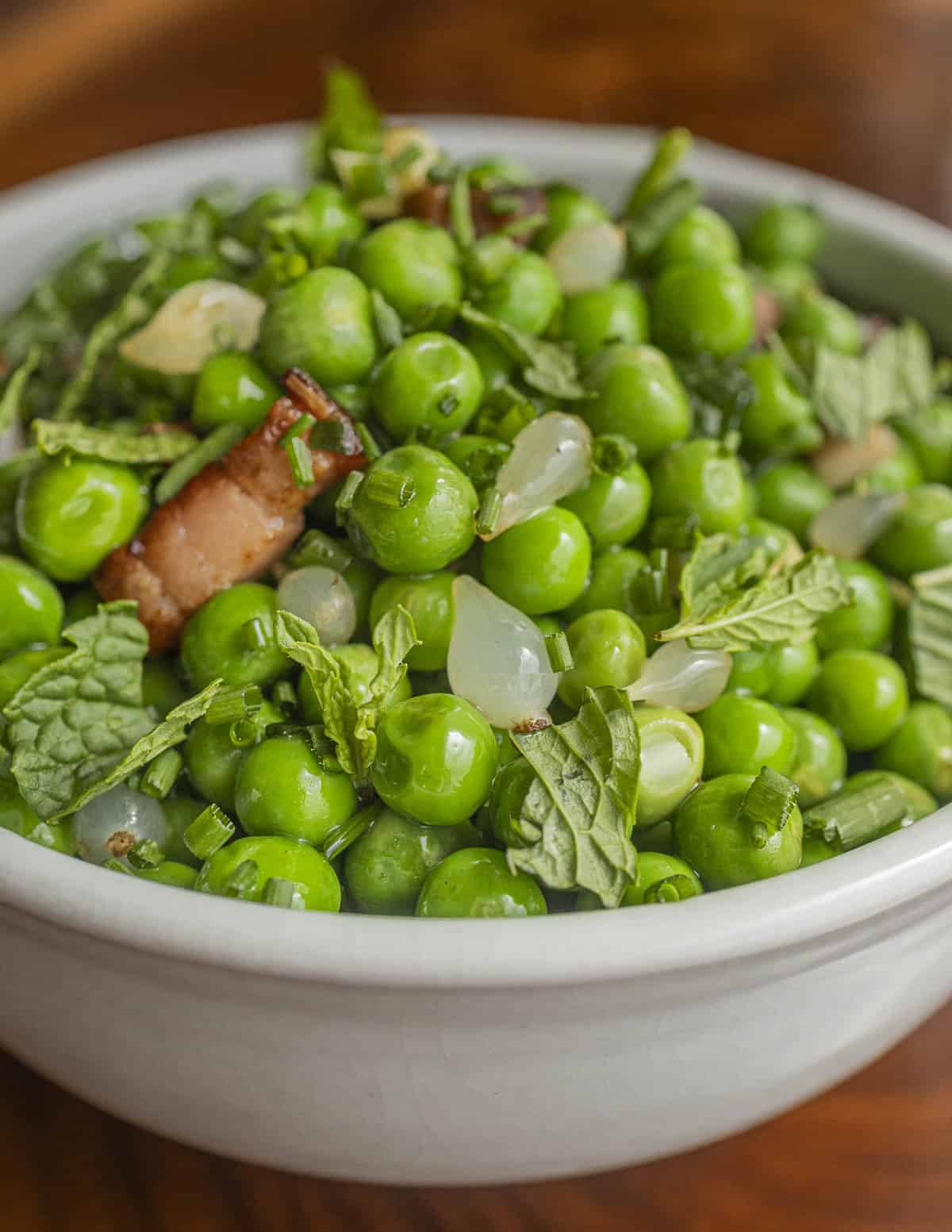
To make it, render 2 oz bacon or pancetta cut into thick lardons. Add the onion bulbs to the pan and sweat for a minute, season and add 8 oz quickly blanched English peas. Season to taste with salt, pepper, extra sliced onion leaves and fresh mint.
My favorite dish so far has been the simplest: a rustic onion butter made by simply cooking the bulbs quickly in butter until it browns.
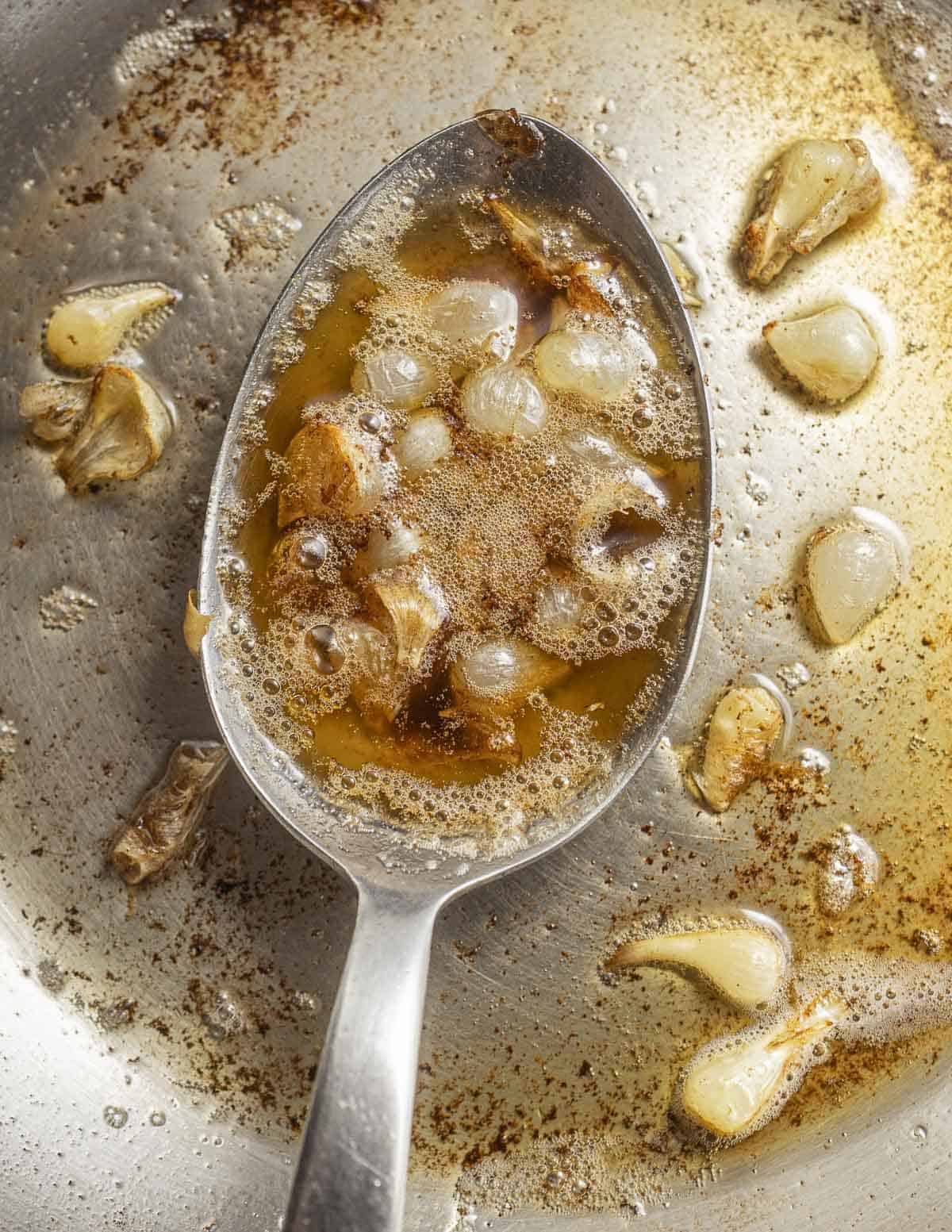
The slightly funky wild onion aroma infuses into the butter and is lovely spooned piping hot on grilled meats or a simple plate of fried eggs. It's probably my favorite preparation for keeping the wild flavor at the forefront. I use about an ounce of wild onion bulbs to two tablespoons of butter.
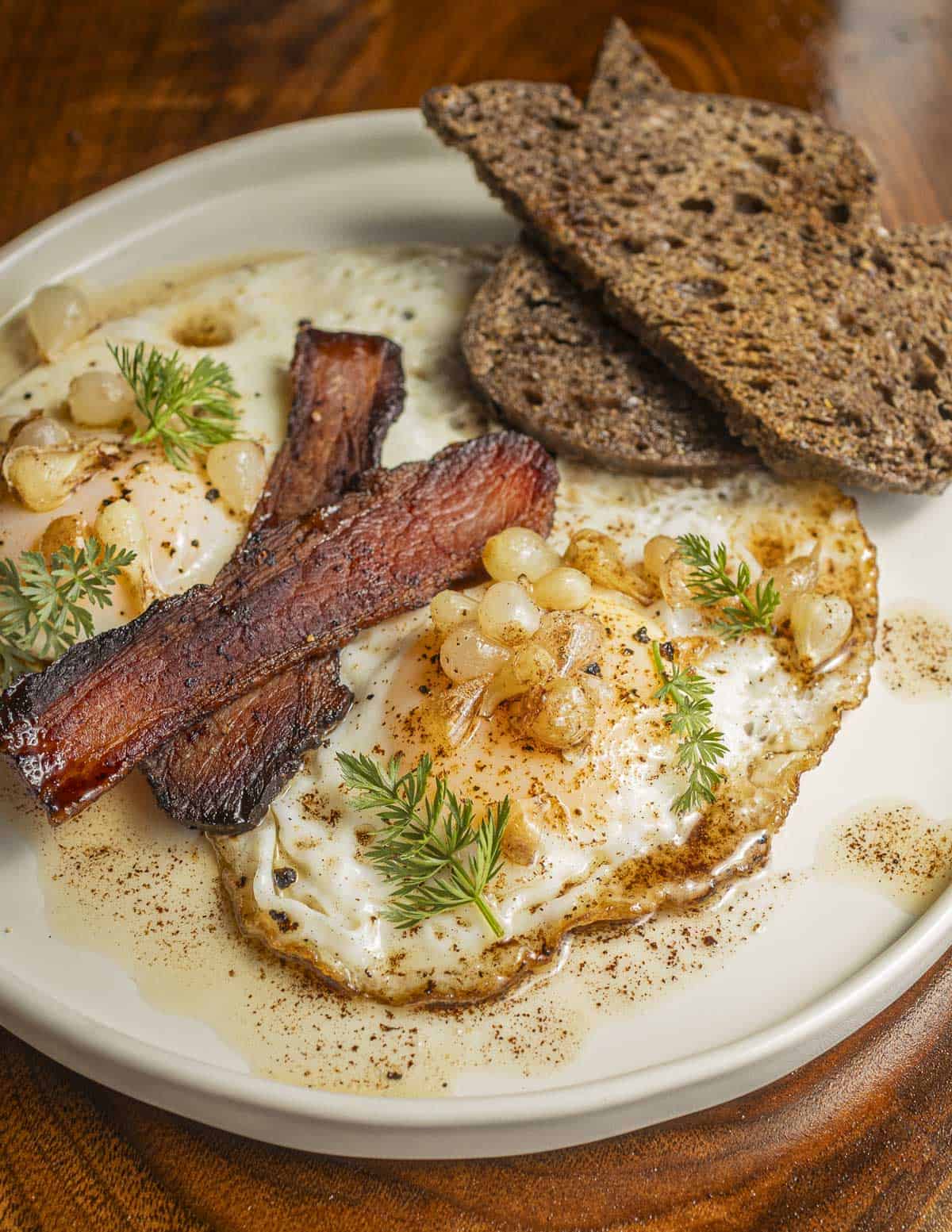
Do you cook with field garlic? Feel free to leave a comment and share your suggestions!

Melanie
I made the rustic butter this morning with garlic that I found on the back of our property here in the Arkansas Ozarks. Instead of toast I served it on a bed of grits. I didn’t have any caraway leaves so I served it with Virginia pepperweed that I also found on our land. This was a really great way to enjoy the garlic and the farm fresh eggs that our neighbor walked over the other day. Thank you so much not only for the recipes and ideas you share but for the massive amounts of information!
Alan Bergo
Thanks Melanie
Crystal Cartmell
the bulbs are very bitter here in bloomington, in, somewhat better after simmering them and removing the outer layers by squeezing the inner bulb out. the greens are great before my chives come on.
Alan Bergo
Hey nice to hear from someone that has them here locally.
Jesse Auer
I’ve used these as additional “onions” in pickled fish. I didn’t know about found most of the stems tough, but the pickled bulbs where excellent with the fish.
Ellen
Excellent information Alan. I’ve always wondered how to cook with these weedy things in my yard. Now at least I have a good use for them! I’m looking forward to trying several of these ideas.
And you’re right. Here in Georgia they are a nightmare to try to get rid of. Plus the bulbs are in the soil all over, lurking, even where you don’t currently see the leaves/stems.
sass
easily pulled from dry sandy loam soil, we need rain in sw michigan. right then I shake out , separate, sort them right in the woods and give them another shake when I get home. next day I trim the roots and peel off the outer layers, rinse and blanch before using.
I think getting them all wet first would make the task more difficult. but maybe it depends on the soil.
Alan Bergo
Thanks Sass.
Mike Wallace
It is worth mentioning a similar-looking toxic species —Crowpoison, which doesn't have the onion/garlic odor. Formerly listed as Allium bivalve, Nothoscordum bivalve is in the Amaryllidaceae family known by the common names crow poison and false garlic. It is common in the SE US.
Hank Shaw
Literally the first thing I ever "foraged." I would eat it at any moment growing up in New Jersey. My older sisters said I started doing that before I could talk!
Alan Bergo
That’s cool. Stinks we don’t have much around here.
Rez
I remember them being everywhere in the school/church yard when I was coming up. I would always puck them because I loved the smell...just ne er had the guts to put it in my mouth back then. 🙂
Gregg
They're everywhere here in the Hudson Valley...
JudyK
Are you going to try to plant some of what you brought home in your suitcase, just to see if it survives in our northern climate?
Alan Bergo
No my chives come up quick and I’ve planted so many different alliums. I should be good 🤣
Dean Sherwood
My daughter could barely walk and talk before I heard her yell "onion grass" and headed for a bunch. My ex and I were separated by then, but she must have taught her that much. I taught her a bit more as she grew. It didn't seem to take, I'm sorry to say.
Alan Bergo
Thanks for sharing Dean. Nice to hear from you.
Dwayne in OH
What a great addition to the kitchen! I tried dehydrating some and toasting them with a kitchen torch, and wow—the flavor intensified and the bitter sheath layer turned to a smoky caramelized char. I plan to use it to make “garlic” bread and walnut chutney.
Alan Bergo
That sounds great
Christine
That sounds like it would make great mayu for ramen!
Ellen
10 years ago when I lived in PA I had a spot where the A. vineale grew big, fat, and singly in the shade. No shovel needed. I could just grasp the lower stem and pull out bulb after bulb, each about 1/2 inch in diameter. I miss that!
Alan Bergo
I would’ve loved that. These were in really packed, sandy soil.